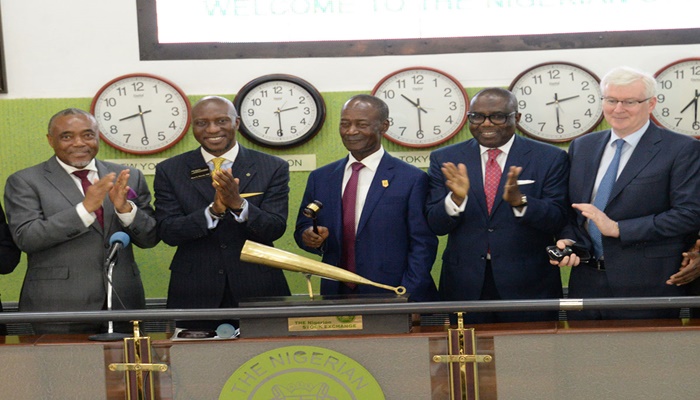
The Nigerian equities market started the week on a negative note, as the benchmark index, All-Share Index dropped by 0.42 per cent to 32,048.18 points, with investors booking profit across sectors.
AS a result, the Month-to-Date and Year-to-Date losses increased to 1.29 per cent and 16.20 per cent respectively.
Most sectoral indices — Consumer Goods (-0.58%), Insurance (-0.55%), Industrial Goods (-0.49%), and Banking (-0.48%) — closed in the red, while the Oil & Gas (+0.82%) index was the sole gainer.
The notable stocks include UNILEVER (-5.95%), PRESTIGE (-8.93%), CCNN (-9.38%), FBNH (-3.92%), and SEPLAT (+2.40%), respectively.
Market breadth remained negative with 24 losers and 16 gainers, led by CCNN (-9.38%) and CADBURY (+10.00%) stocks respectively. Total volume and value of trades dropped by 33.99% and 38.56% to 157.83 million units and NGN1.75 billion, respectively, and exchanged in 3,134 deals.
“We reiterate our negative outlook for the equities market in the short to medium term, amidst political concerns ahead of the 2019 elections, and the absence of a positive market trigger. However, positive macroeconomic fundamentals remain supportive of recovery in the long term”. Analysts at Cordros Capital said.
The USD/NGN strengthened by 0.03 per cent to NGN363.64 in the I&E FX window, while it remained flat at NGN362 in the parallel market.
Total turnover in the IEW rose by 2.16 per cent to USD231.24 million, with trades consummated within the NGN358.00-365.00/USD band.
Meanwhile, the apex bank, on Friday, intervened in the FX market, injecting USD337.16 million into the interbank retail Secondary Market Intervention Sales (SMIS), and selling CNY56.17 million in spot and short-tenured forwards.
The overnight lending rate shed 125 bps, to close at 3.58 per cent, amidst still robust liquidity.
Proceedings in the treasury bills market were bullish, as average yield moderated by 30 bps to 13.14 per cent. Yields contracted at the short (-59 bps), mid (-10 bps) and long (-8 bps) ends of the curve, owing to demand for the 10DTM (-220 bps), 115DTM (-25 bps), and 325DTM (-22 bps) bills, respectively.
Sentiments in the bond market were mixed, albeit with a bearish tilt, as average yield rose by 2 bps to 15.29%. There were selloffs at the mid (+8 bps) segment, with the JAN-2026 (+12 bps) bond recording a significant expansion. Conversely, demand for the FEB-2020 (-18 bps) bond led to yield contraction at the short (-4 bps) end of the curve. Yield at the long segment was flat.







